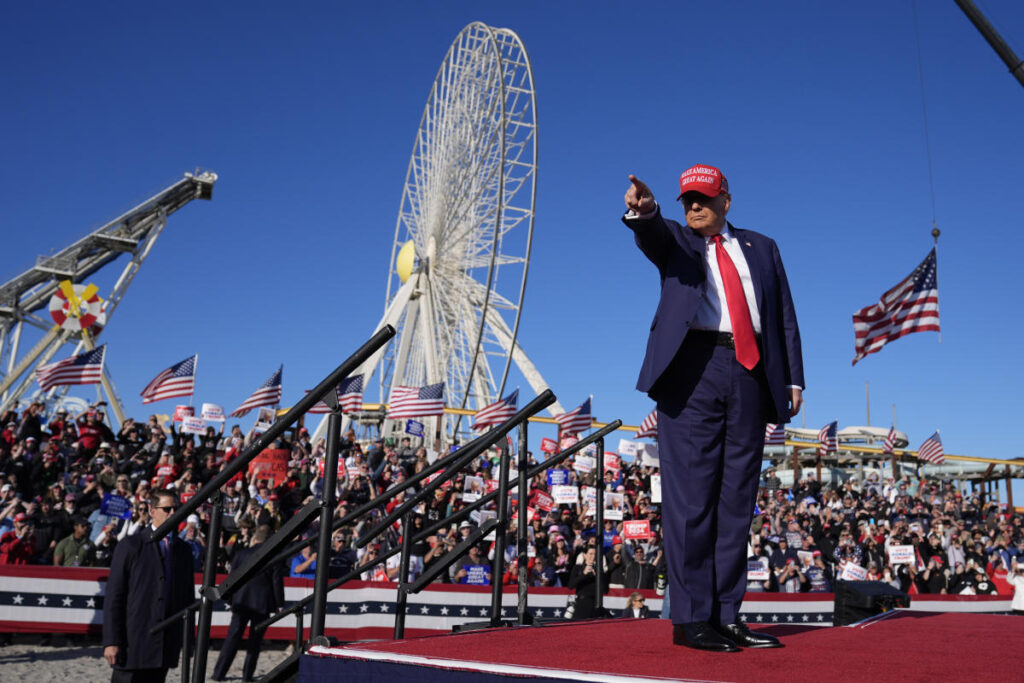In the recent New Jersey elections, a state known for its Democratic leanings displayed unexpected swing state characteristics, suggesting a significant shift in voter sentiment. Vice President Kamala Harris won New Jersey against Donald Trump, but the margin was notably smaller than in past elections, with Trump losing by only five points compared to double-digit defeats in 2016 and 2020. This marks the closest a Republican has come to winning New Jersey since George H.W. Bush in 1992, highlighting Trump’s ability to connect with constituents in a traditionally blue state. This election comes against a backdrop of a growing Democratic voter base, which has increased threefold compared to Republicans, yet Trump’s campaign suggested a more competitive atmosphere, particularly in South Jersey.
Trump’s campaign managed to make significant gains not only in New Jersey but also in traditionally Democratic areas such as New York and Massachusetts. Notable shifts were observed in key counties like Hudson and Passaic, where Trump saw a substantial rise in support among Hispanic voters—reflecting a possible broader trend across the state that took both parties by surprise. For instance, Hudson County, known for its substantial Hispanic population, indicated a rise from 26% support for Trump in 2020 to about 35% this election. Additionally, Passaic County, with a large Arab American community, showcased a complex voter dynamic, as frustrations over past Democratic representatives may have influenced voting behavior, signifying a potential shift among voters traditionally aligned with Democratic values.
The economic climate appears to be a significant factor influencing voter decisions. High costs of living and taxes in New Jersey led many working-class voters, including Hispanics in urban areas, to seek alternatives to the Democratic platform. According to exit polls, 56% of Trump supporters cited the economy and jobs as their paramount concerns, indicating that frustrations with the current economic environment may have driven voters toward Republican candidates. Republican leaders emphasized that the Democratic narrative focused on elite concerns, neglecting everyday issues faced by working-class individuals struggling with housing and economic instability.
Despite the close race for the presidency and some local Republican victories, Democrats managed to retain all nine of their House seats and a U.S. Senate seat. Democratic strategist Dan Bryan emphasized that while the results showcased a symbolic victory for Republicans, they should not overlook the deeper implications of voter sentiments. The political landscape in New Jersey has been shifting, reflected in previous elections where Democratic gubernatorial wins were narrower than expected. In 2021, Governor Phil Murphy’s narrow victory alluded to broader economic discontent among voters, indicating a potential red wave on the horizon, which aligns with ongoing trends seen in the 2023 elections.
Republican observers noted that cultural grievances and economic struggles may have played a role in shifting voter perspectives. A growing frustration among voters about being labeled negatively based on their political beliefs suggests that Trump’s messaging resonated with those feeling alienated by liberal elites. Democratic leaders, including Murphy, recognized the importance of these results as indicators of potential challenges in upcoming elections, with calls for heightened engagement with diverse communities to ensure their voices are heard and represented.
Overall, the election outcomes in New Jersey indicated a shifting political landscape that warrants reflection from both parties. The rise in support for Republicans among Black and Hispanic voters adds complexity to the state’s political identity, prompting Democratic leaders to reconsider their messaging and approach. As they seek to re-engage with communities feeling overlooked, the urgency to address economic concerns and cultural perceptions becomes paramount in shaping the future electoral landscape, with an emphasis on ensuring alignment between party platforms and the needs of a diverse electorate. The political dynamics in New Jersey serve as a bellwether for national trends, suggesting that voter frustrations could significantly impact upcoming elections if not adequately addressed.

